IN HISTORY
1957 Washing machine
“IN HISTORY”: Sharp and design in history – A joint project with Sharp Museum commemorating its 40th anniversary.
Hello, I am Fujiwara from Sharp Museum. This is a series where Sharp Museum staffs Fujiwara and Nakatani talk randomly about products and history of Sharp. I hope this will be an opportunity for you to find interest in Sharp’s history in some way.
This time I will introduce the 1957 washing machine.
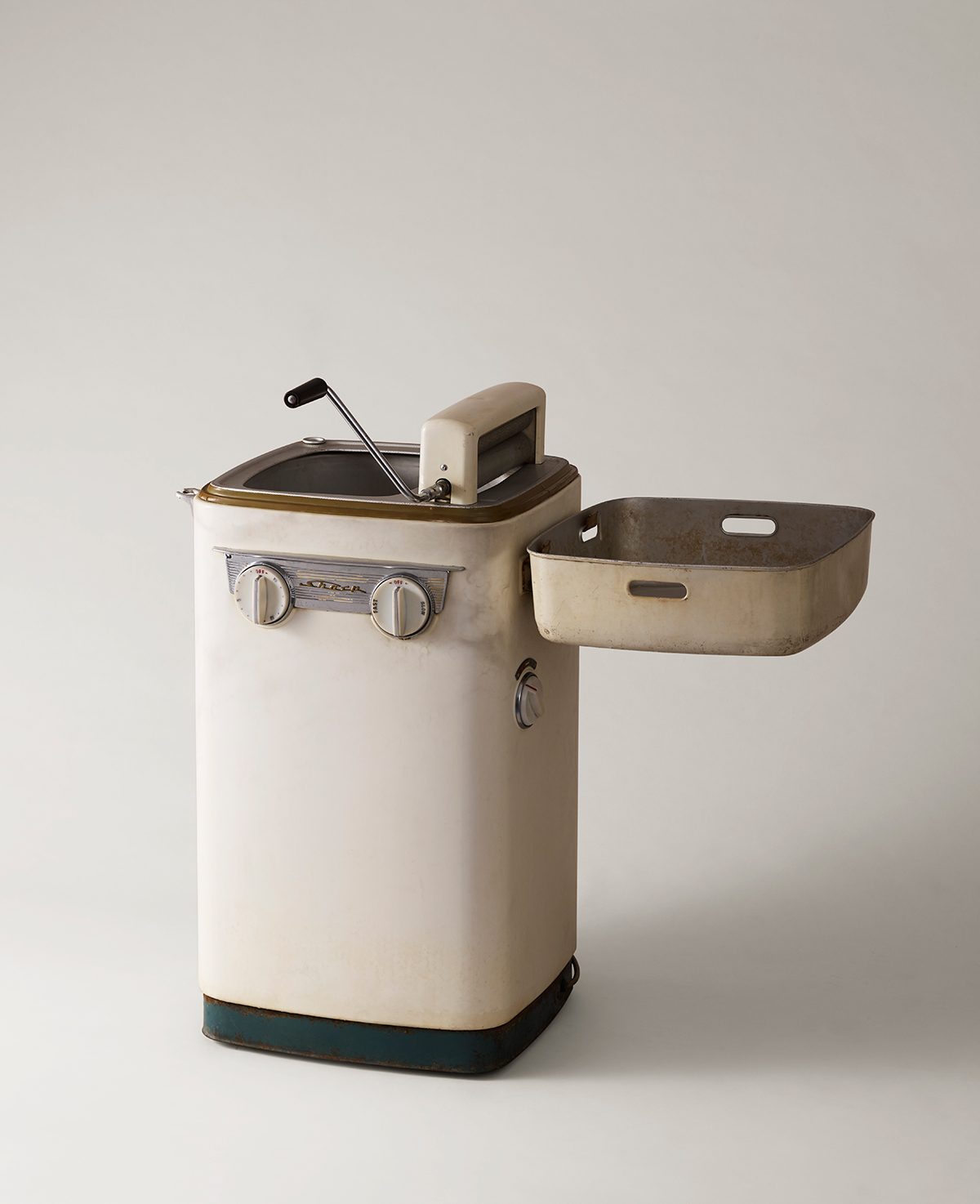
The Evolving Washing Device
This washing machine appeared in the midst of Japan’s high economic growth period. The washing machine was counted as one of the “Three Sacred Treasures” at that time, together with the black and white TV and the refrigerator, and contributed to handling housework more efficiently.
The washing machine is a home appliance that drastically evolved over time.
People used to do washing at rivers and ponds, and used tools like stones and sticks together with buckets and washtubs, which were eventually spun around to stir.
Later, hand operated washing devices were created with a stirring stick, which developed into electric devices after electricity was found and motors were developed.
The invention of the washing machine must have relieved people in Japan as well from the heavy duty of washing using a washtub and washing board, and contributed to the start of Japan’s new home appliance industry.
The washing machine now even dries just by the touch of the button!
We can’t imagine a life without a washing machine now.
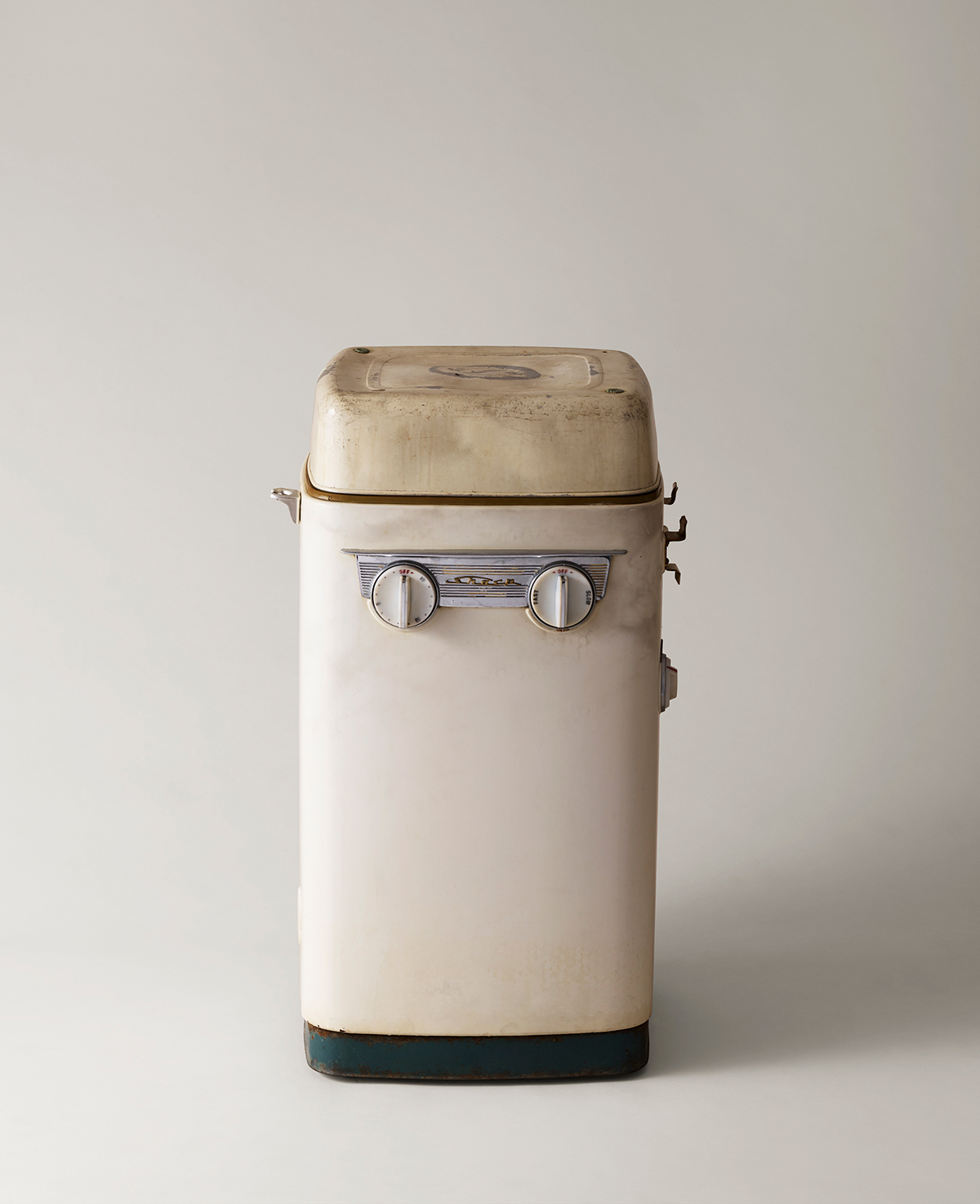
Peaceful Form
This washing machine is such a hard worker, yet it doesn’t appear to be frustrated with its smooth gentle appearance almost gives a sense of peace. This sound form without any edges may be necessary for today’s people who do not have a chance to rest themselves.
By the way, do you know what the bar with a grip on the side of the device was used for? The washing machine in the photo is a single-tub type attached with a hand operated handle-type squeezer.
After washing, the clothes were placed between the two rollers and squeezed by rotating the handle manually.
It’s almost like a pasta machine. It squeezes your clothes and flexes your biceps!
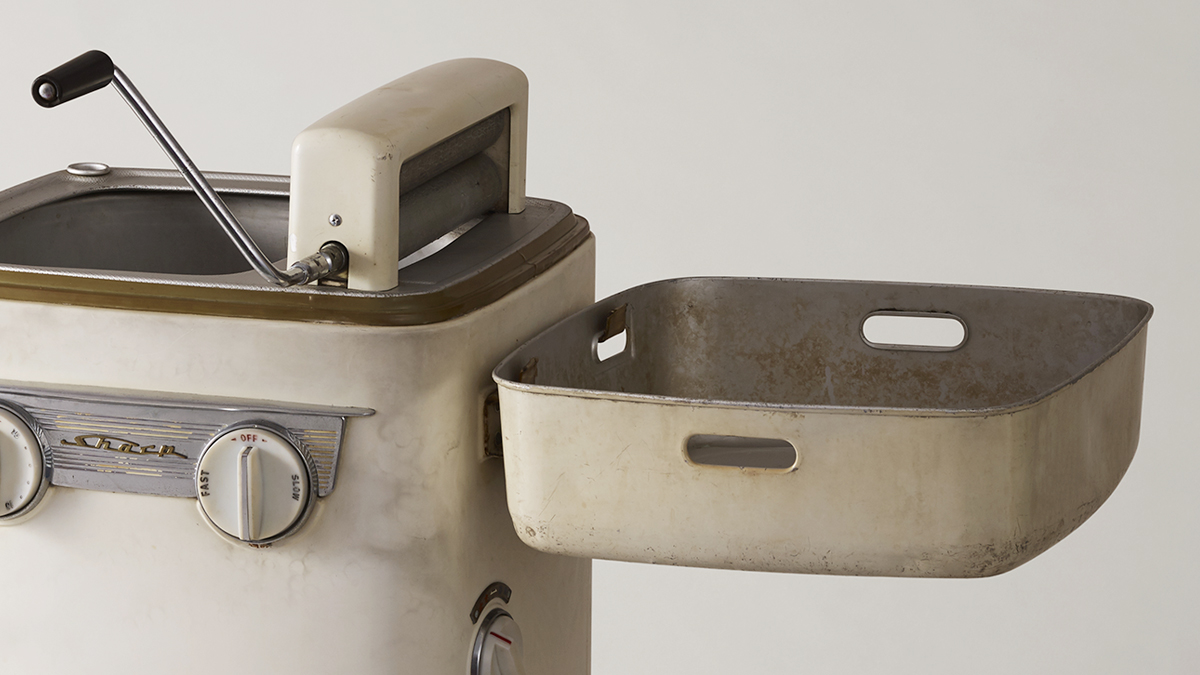
Also, the lid has slits on the sides that can be used as handles, making this a basket for the washed clothes. By attaching the lid to the side of the squeezer, it could also be used as a receiver of the squeezed clothes.
By the way, there are two large dials in the front. One is to change the power of water flow. The other is to choose the time of washing depending on the person’s convenience. How free!
It can be imaged many schemes were considered through observing users and listening to their opinions.
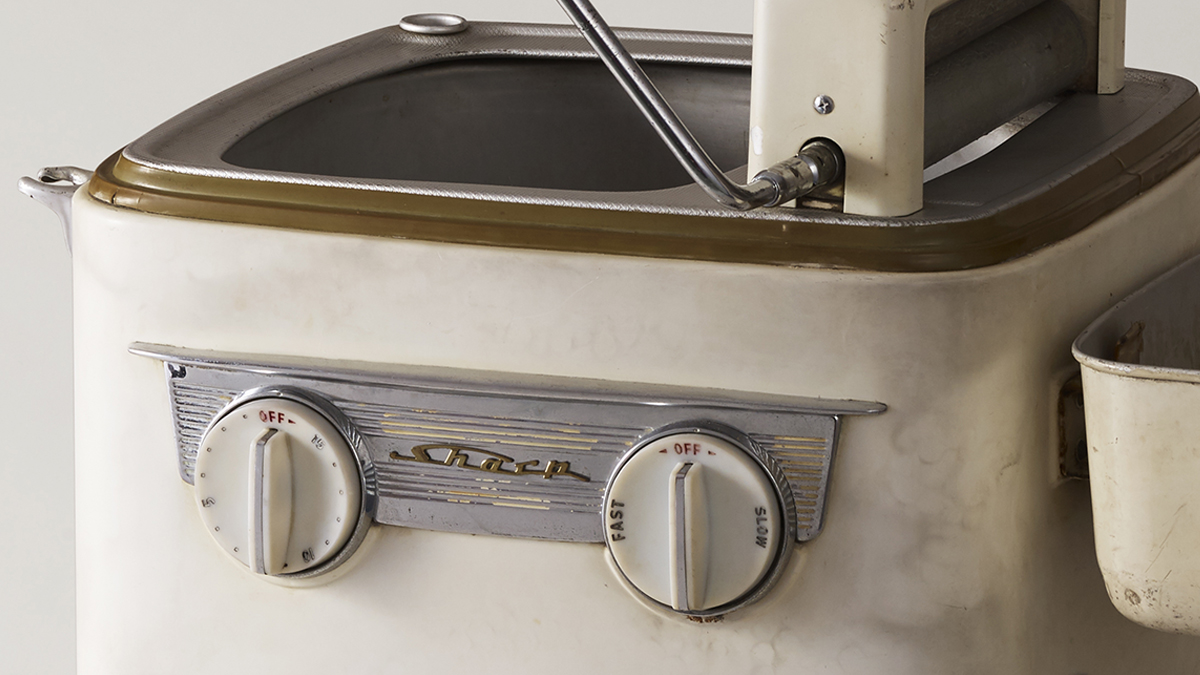
Answering Demands to Wash at Night
A succeeding model with an extremely unique feature appeared one year after the above model.
At that time, there were no laundry space or sanitary space inside the households in Japan. Washing machines were usually placed on the balcony at apartments and dirt floors behind the kitchen at households, which is generally dark. That made washing in the night time inconvenient and not an amusing chore.
However Japan was reaching its high economic growth period and people’s demands to use time efficiently and wash clothes at night were growing. Therefore, a new model with a fluorescent light attached on top was made to enable washing under a brighter and comfortable environment.
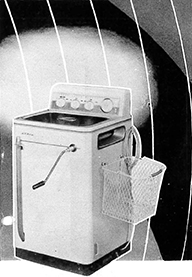 ES-300 washing machine with fluorescent light
ES-300 washing machine with fluorescent light
The different atmosphere and the idea of the designers at that time gives me a nostalgic, surprising and heartwarming feeling.
That’s it for this time. Next we will introduce our lacquer painting radio.
[Sharp Museum commemorated it 40th anniversary on November 2021]
This is a series of Sharp Museum staffs Fujiwara and Nakatani talking randomly about products and history of Sharp. I hope this will be an opportunity for you to find interest in Sharp’s history in some way.